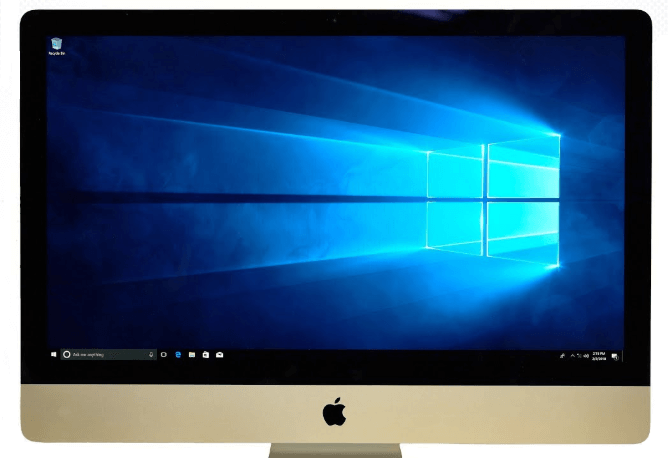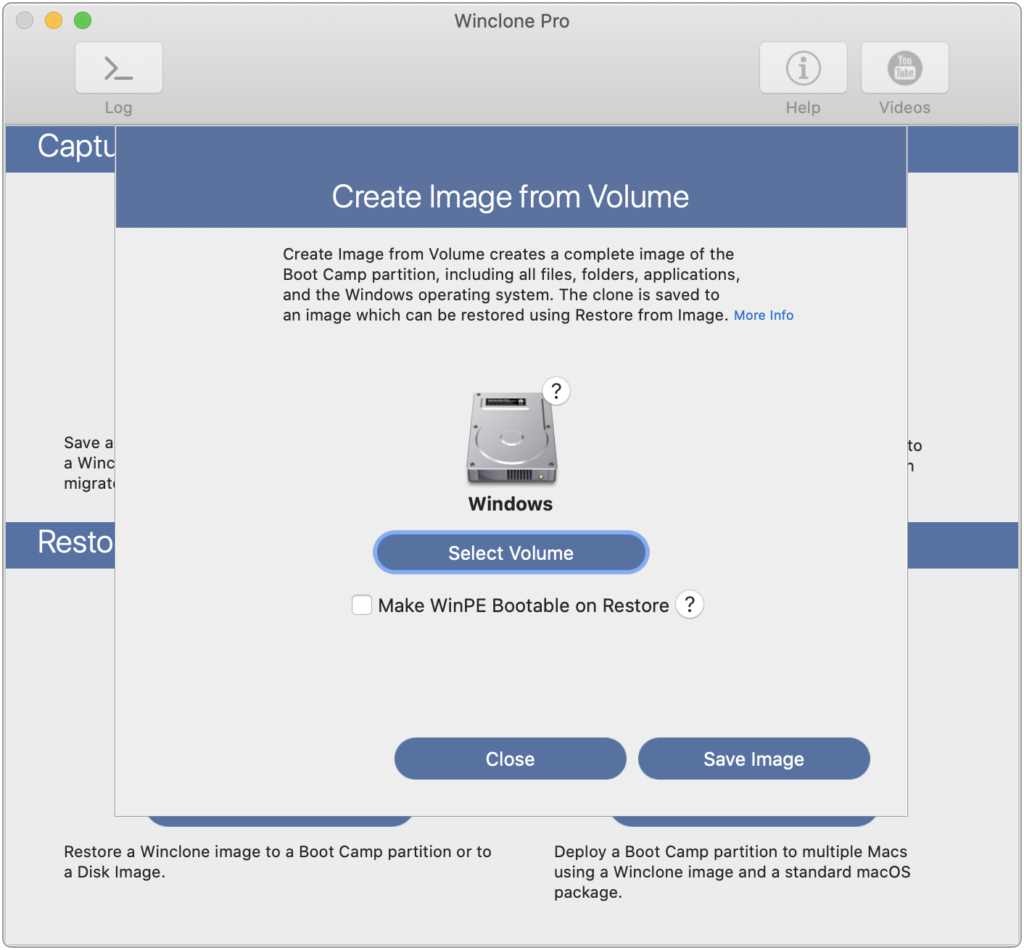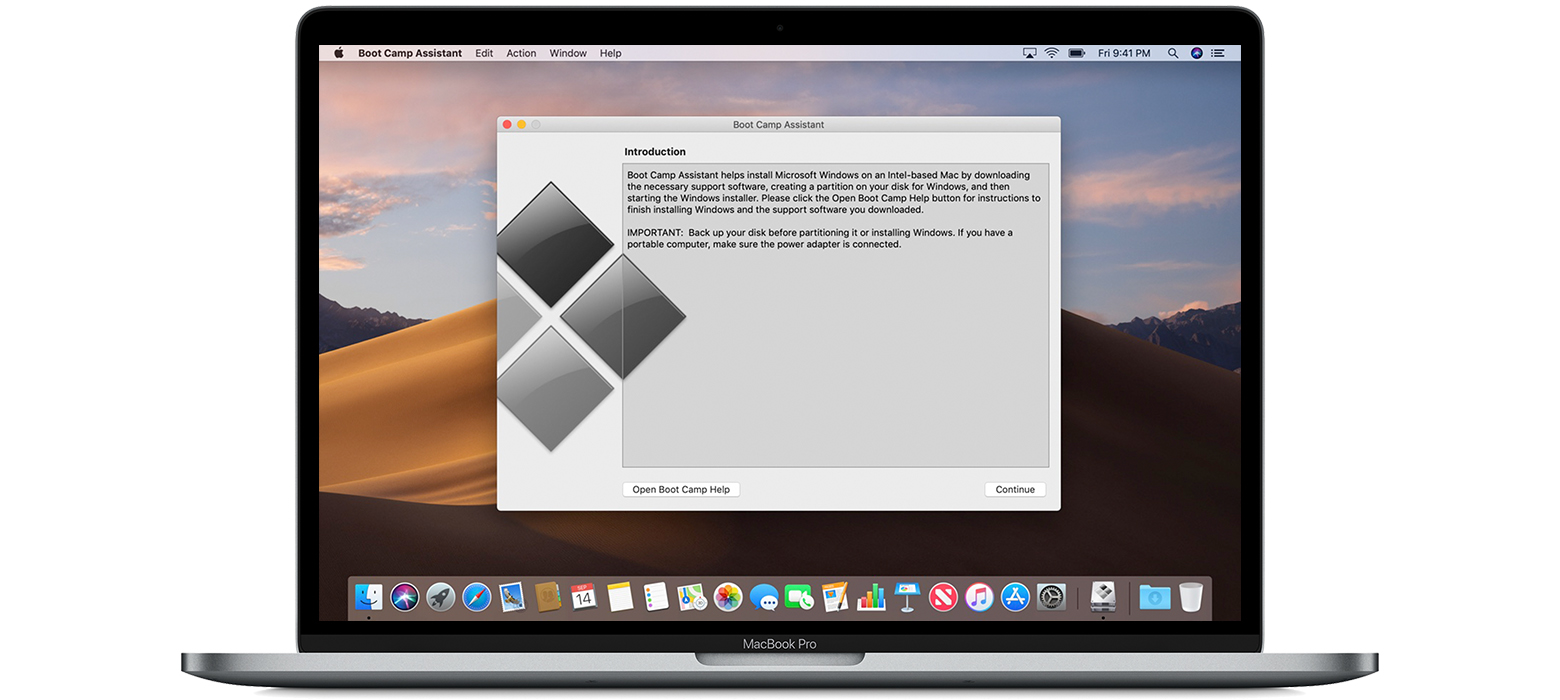Windows 10 Boot Camp Mac With External Driev
When you install Microsoft Windows on your Mac, Boot Camp Assistant automatically opens the Boot Camp installer, which installs the latest Windows support software (drivers). If that doesn't happen, or you experience any of the following issues while using Windows on your Mac, follow the steps in this article.
- Your Apple mouse, trackpad, or keyboard isn't working in Windows.
Force Touch isn't designed to work in Windows. - You don't hear audio from the built-in speakers of your Mac in Windows.
- The built-in microphone or camera of your Mac isn't recognized in Windows.
- One or more screen resolutions are unavailable for your display in Windows.
- You can't adjust the brightness of your built-in display in Windows.
- You have issues with Bluetooth or Wi-Fi in Windows.
- You get an alert that Apple Software Update has stopped working.
- You get a message that your PC has a driver or service that isn't ready for this version of Windows.
- Your Mac starts up to a black or blue screen after you install Windows.
Mar 20, 2019 How to install Windows 10 on your Mac mini with an external drive Need to run Windows natively on your Mac mini but can't partition your disk? Here's one solution! Drag and drop the WindowsSupport file we downloaded from Boot Camp earlier into the Windows 10 VM window. Install Win-to-USB in the Windows 10 VM.
If your Mac has an AMD video card and is having graphics issues in Windows, you might need to update your AMD graphics drivers instead.
Bootcamp Windows External Drive
Install the latest macOS updates
Before proceeding, install the latest macOS updates, which can include updates to Boot Camp.
Format a USB flash drive

To install the latest Windows support software, you need a 16GB or larger USB flash drive formatted as MS-DOS (FAT).
- Start your Mac from macOS.
- Plug the USB flash drive into your Mac.
- Open Disk Utility, which is in the Utilities folder of your Applications folder.
- Choose View > Show All Devices from the menu bar.
- From the sidebar in Disk Utility, select your USB flash drive. (Select the drive name, not the volume name beneath it.)
- Click the Erase button or tab.
- Choose MS-DOS (FAT) as the format and Master Boot Record as the scheme.
- Click Erase to format the drive. When done, quit Disk Utility.
Download the Windows support software
After preparing your USB flash drive, complete these steps:
- Make sure that your Mac is connected to the Internet.
- Open Boot Camp Assistant, which is in the Utilities folder of your Applications folder.
- From the menu bar at the top of your screen, choose Action > Download Windows Support Software, then choose your USB flash drive as the save destination. When the download completes, quit Boot Camp Assistant.
Learn what to do if you can't download or save the Windows support software.
Install the Windows support software

After downloading the Windows support software to your flash drive, follow these steps to install the software. (If you're attempting to resolve issues with a Bluetooth mouse or keyboard, it might be easier to use a USB mouse or keyboard until these steps are complete.)
- Make sure that the USB flash drive is plugged into your Mac.
- Start up your Mac in Windows.
- From File Explorer, open the USB flash drive, then open Setup or setup.exe, which is in the WindowsSupport folder or BootCamp folder. When you're asked to allow Boot Camp to make changes to your device, click Yes.
- Click Repair to begin installation. If you get an alert that the software hasn't passed Windows Logo testing, click Continue Anyway.
- After installation completes, click Finish, then click Yes when you're asked to restart your Mac.
Learn more

If you can't download or save the Windows support software:
- If the assistant says that the Windows support software could not be saved to the selected drive, or that the USB flash drive can't be used, make sure that your USB flash drive has a storage capacity of at least 16GB and is formatted correctly.
- If the assistant doesn't see your USB flash drive, click Go Back and make sure that the drive is connected directly to the USB port on your Mac—not to a display, hub, or keyboard. Disconnect and reconnect the drive, then click Continue.
- If the assistant says that it can't download the software because of a network problem, make sure that your Mac is connected to the Internet.
- Make sure that your Mac meets the system requirements to install Windows using Boot Camp.
If a Mac feature still doesn't work after updating the Windows support software, search for your symptom on the Apple support website or Microsoft support website. Some features of your Mac aren't designed to work in Windows.
Apple is trying to get us to dongle attach 'all the things' but what happens when that philosophy doesn't jive with all of your computing needs? One such situation is when wanting to run Windows 10 natively on your Mac (in my case my Mac mini). The 'normal' method would be to use Boot Camp to repartition your internal hard drive to make room for Windows 10. However, in some instances, repartitioning may not be an option. For example due to disk size limitations. Attaching a Thunderbolt 3 connected drive is the obvious solution but Windows 10 does NOT like to be installed onto detachable devices. Here's how to force the install of Windows 10 onto your externally attached drive!
What you'll need
Mac Windows Boot Camp Drivers
Hardware
Of course you'll need an externally connected drive. I went with a 240GB SATA SSD ($30) that I placed into Thunderbolt 3 capable external SATA enclosure ($9).
Windows 10 Boot Drive Download
Software
First up we'll need an ISO copy of Windows 10.
- Navigate to the Windows 10 Download site.
- Select Windows 10 as the edition.
Click Confirm.
- Select the Language you want.
- Click Confirm.
- Click the 64-bit Download.
- And the download will now begin.
Next, you can download the 30 day free trial of VMware Fusion.
- Navigate to the VMware Fusion download site.
- Click Download Now.
- Allow the download to complete.
Next, we'll need to get a Windows utility called Win-to-USB. Although there is a free version, installing Windows latest 1809 October update will require use to but the non-free version ($30). You are free to use the free version for older Windows 10 ISO's suck as 1803.
- Navigate to the Win-to-USB site.
- Select Upgrade to buy a license. (or if using an older Windows 10 ISO simply click Download for the free version).
- Click Download to get the software.
Finally, we'll need the Boot Camp Windows support files.
- Start Boot Camp Assistant from Spotlight.
- From the menu bar at the top of your screen click Action.
Select Download support software.
- Choose a Download location and click Save.
The setup
The external drive
- Attach your external drive to your Mac.
- Start Disk Utility from Spotlight.
- Select your external drive.
- Click Erase.
- Rename the drive to Boot Camp.
- Ensure that the Format is Mac OS Extended (Journaled).
Ensure the Scheme is set to GUID Partition Map.
- Click Erase.
VMware Fusion
- Install the VMware Fusion software we downloaded earlier by double clicking the DMG file.
- Double click the Installer.
- Enter your Password.
- Agree to the user agreement and select *try VMware Fusion for 30 days**.
- Create a New Virtual Machine.
- Drag and drop the Windows ISO file you downloaded earlier onto the VMware Fusion Window.
Click Continue.
- Select your Windows Version to install. I use Windows 10 Home.
- Click Continue.
- Click Continue without key.
- Select More isolated.
- Click Continue.
- Click Finish.
- Click Save to allow the software to install Windows 10 in a virtual machine.
- Allow the Virtual Machine to boot into a Windows 10 desktop.
Windows 10 VM
Your Windows 10 VM should now be up and running. We will now prepare the external drive and put a basic installation of Window s10 on it.
Click the Wrench Icon to start VM Settings.
Click USB & Bluetooth.
- Check your external drive (here called Boot Camp).
Click OK.
- Right-click the Windows Icon.
Select Disk Management.
- Right-Click the Primary Partition of the attached drive.
Select Delete Volume.
- Click Yes.
- Right-Click on the new Unallocated disk partition.
Select New Simple Volume.
- Click Next.
- Click Next again.
- Again click Next.
- Change the Volume Label to Boot Camp.
- Click Next.
- Click Finish.
Next, we need to attach our Windows ISO to the Windows 10 VM.
From the menu bar select Virtual Machine > CD/DVD SATA > Choose Disk or Disk Image.
- Select the Windows 10 ISO we downloaded.
- Click Open.
- From the menu bar select Virtual Machine > CD/DVD SATA > Connect CD/DVD.
Move files into the VM
- Drag and drop the WinToUSB_Free.exe file we downloaded earlier into the Windows 10 VM window.
- Drag and drop the WindowsSupport file we downloaded from Boot Camp earlier into the Windows 10 VM window.
Install Win-to-USB in the Windows 10 VM
- Double-Click the WinToUSBFree.exe in Windows.
- Install Win-to-USB with all of the defaults in your selected language.
Next, we run Win-to-USB.
- Double-Click the desktop Icon for Win-to-USB.
- If you bought a License to install 1809 October update, click Upgrade now.
- Enter your license key and click Register.
- Restart Win-to-USB.
- Select the CD/DVD icon.
- From the drop down list select your attached Windows 10 ISO.
Select the version of Windows 10 you wish to install.
- Click Next.
- From the drop down list select your attached drive.
- Select the EFI partition (The smaller partition).
- Select the boot partition (The larger partition).
- Click Next.
- Allow the installation to complete.
- Click Exit.
Copy the WindowsSupport files from Boot Camp onto the newly updated windows partition on your externally attached drive.
- Open File Explorer.
- Navigate to the Boot Camp E
:drive. - Move the files onto the Boot Camp E
:drive.
Finally, shut down VMware Fusion.
- Select Virtual Machine > Shut Down.
Mac OS changes
Now we can set the boot order to boot from the external drive.
- Open System Preferences.
- Select Startup Disk.
- Click the Lock.
- Enter your Password.
- Select Boot Camp Windows.
- Click Restart.
Finishing up
That's it! Once the machine reboots you'll be presented with a Windows 10 install sequence. Follow the prompts like you normally would and you'll be able to run Windows 10 natively on your Mac. Here are some notes to follow up on.
- Once your windows installation is complete, remember to navigate into file explorer and install the Boot Camp drivers for your machine. That will setup your network card, display, and other Apple-centric devices. This will also install the Boot Camp program to help you reboot into macOS.
- If for some reason you have troubles, power down your Mac and simply detach your external drive. You should be able to simply reboot into macOS.
- If that fails, hold Command-Option-P-R all at once and wait until you hear two chimes. Once done, you'll be able to boot back into macOS.
Final comments
Now you can run native Windows 10 and native macOS Mojave. The best of both worlds with little compromise. If you have any tips on getting this working in a better or faster way. Please let us know in the comments!
We may earn a commission for purchases using our links. Learn more.
🍎 ❤️This is how Apple will keep people safe when reopening Apple Stores
Apple recently reopened its store in Seoul, South Korea. And it has measures in place to keep people safe.